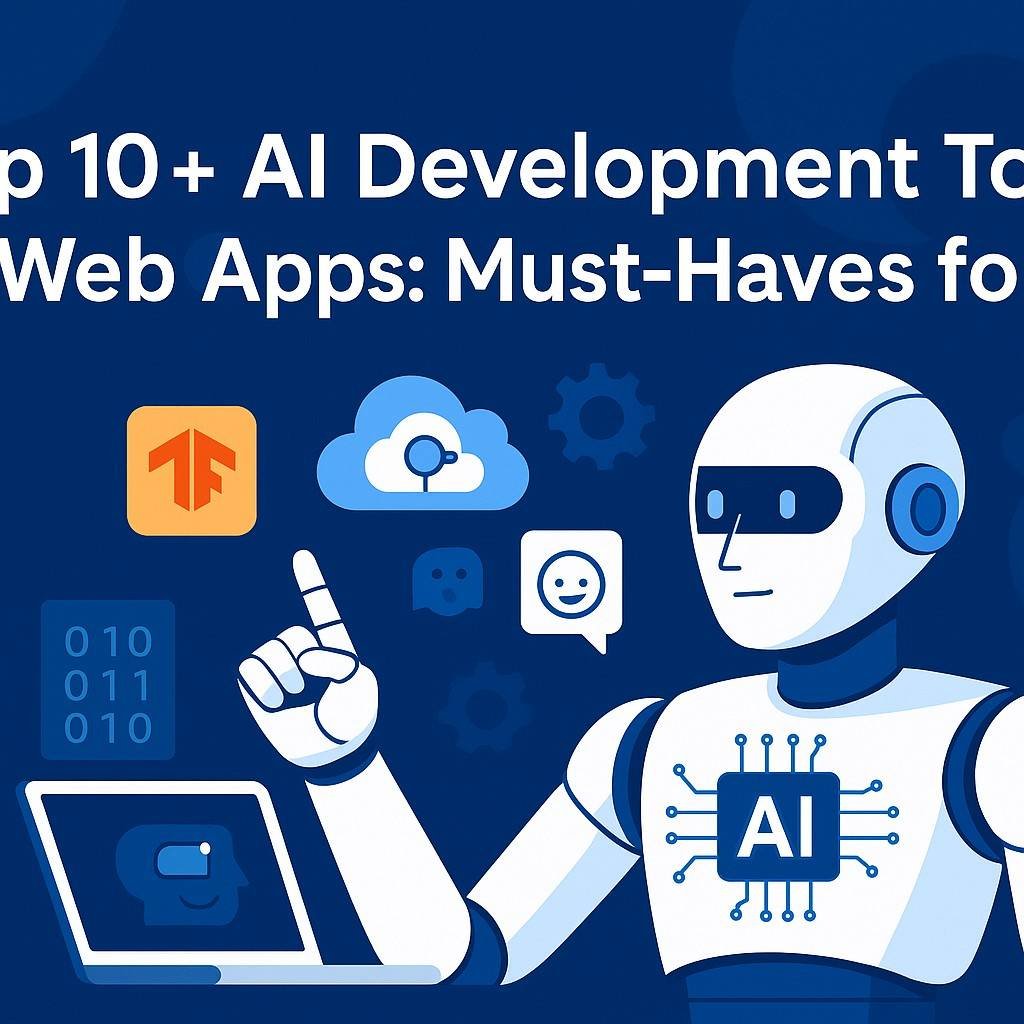Artificial Intelligence isn’t just a buzzword we sprinkle on proposals anymore—it’s the backbone of modern web applications. And as a web application development company (yes, we’re talking about teams like Kanhasoft), choosing the right AI tools can mean the difference between a sleek, automated marvel and… well, a glorified static page pretending to be “intelligent.”
Before we dive into the list, here’s a quick personal observation: we once spent three days debugging an “AI chatbot” that turned out to be responding using pre-set FAQ answers (essentially, it was just very polite JavaScript). Lesson learned—always choose tools that actually do what they claim.
Let’s get into the serious stuff. (Don’t worry, we’ll keep it fun.)
1. TensorFlow (Because, of course.)
TensorFlow remains the powerhouse for machine learning in 2025. It’s like that reliable friend who still shows up to help you move furniture on a Saturday morning. Whether you’re building a recommendation engine or predictive analytics model, TensorFlow has the flexibility and scalability to handle it.
2. PyTorch (The Researcher’s Darling)
If TensorFlow is the steady old friend, PyTorch is the trendy cousin who somehow makes everything look easier. Its dynamic computation graph makes prototyping faster—perfect for web app developers who like seeing results yesterday.
3. OpenAI API (Yes, ChatGPT’s Family)
Need NLP capabilities? OpenAI’s API has become the go-to tool for integrating conversational AI, content generation, or summarization into web apps. At Kanhasoft, we’ve used it to turn boring user manuals into interactive, chatbot-driven experiences. Users think we hired a 24/7 genius intern (spoiler: we didn’t).
4. Microsoft Azure AI
Azure AI offers pre-built models and easy deployment options. It’s perfect for teams that don’t want to reinvent the wheel—because sometimes building an AI model from scratch is like deciding to knit your own socks when you can just buy them.
5. Google Vertex AI
Think of Vertex AI as Google’s “all-in-one” platform. It’s designed for developers who want end-to-end ML pipeline support—training, deploying, scaling—all in one place. And yes, it plays well with other Google Cloud services (big surprise there).
6. IBM Watson
Watson is still alive and thriving (contrary to those jokes about it retiring early). Its AI services are reliable, enterprise-ready, and particularly great for data-heavy applications. Plus, its speech-to-text accuracy is eerily good—almost like it’s eavesdropping.
7. Hugging Face Transformers
For NLP projects, Hugging Face is the equivalent of discovering a free buffet at a tech conference. It offers pre-trained models for everything from sentiment analysis to text summarization—saving you countless hours (and sanity).
8. Amazon SageMaker
SageMaker remains a solid choice for deploying machine learning models without handling messy infrastructure. It’s the tool for teams that say, “We love AI but hate DevOps.”
9. Scikit-learn
Not every project needs deep learning. For lightweight ML tasks, Scikit-learn is still a go-to library—simple, efficient, and not trying to be fancy. Like a trusty screwdriver, it just works.
10. DataRobot
For businesses wanting automation in their AI pipeline, DataRobot is a lifesaver. It handles model building, training, and deployment—leaving you more time to do… literally anything else.
11. RapidMiner (Bonus!)
RapidMiner makes AI accessible to teams without hardcore data scientists. Its drag-and-drop interface means you can build models while sipping coffee, which, frankly, is how most innovation happens.
How These Tools Fit Into Web App Development
Now, why does a web application development company (like Kanhasoft) care so much about these tools? Because in 2025, users expect apps to be smarter—predictive search, automated workflows, personalized dashboards. And if your app doesn’t do that? They’ll uninstall faster than you can say “but we used Bootstrap!”
Personal Anecdote Alert:
We once built a dashboard that didn’t use AI to recommend actions. Users loved the clean design… for about three days. Then came the inevitable email: “This is great, but can it tell me what to do next?” (Translation: nice charts, but we want a crystal ball.) That’s when we realized—data visualization is good; AI-driven insights are better.
Quick Tips for Choosing the Right AI Tools
- Match complexity to need. Don’t deploy TensorFlow when a simple Scikit-learn model would do.
- Think integration. Tools are great, but only if they work with your existing tech stack.
- Scalability matters. If your web app grows, will the tool keep up—or crumble like that one office chair we refuse to replace?
Conclusion: The AI Toolbelt for 2025
The takeaway? In 2025, building a competitive web application without AI is like trying to sell a smartphone without a camera—it’s just not going to cut it. The good news: with the right stack (TensorFlow, Hugging Face, Azure AI, etc.), even smaller teams—like ours at Kanhasoft—can create intelligent, scalable, and user-friendly solutions.
Q1: Which AI tool is best for a beginner-friendly web app?
A: Start with Hugging Face for NLP or Scikit-learn for basic ML. They’re easy to implement and well-documented.
Now go forth and build smarter apps. (And maybe retire that polite-but-dumb FAQ bot while you’re at it.)
FAQs
Q2: Are these tools free to use?
A: Many have free tiers, but enterprise-level projects usually require paid plans (or cloud credits).
Q3: Can Kanhasoft help integrate these tools into my web app?
A: Yes. As a web application development company, Kanhasoft specializes in integrating AI features into custom web apps.
Q4: Which AI tool is best for chatbots in 2025?
A: OpenAI API or Azure AI, depending on your budget and desired level of customization.
Q5: Do I need to hire data scientists to use these tools?
A: Not always. Many modern platforms (like DataRobot or RapidMiner) are designed to be no-code/low-code.
